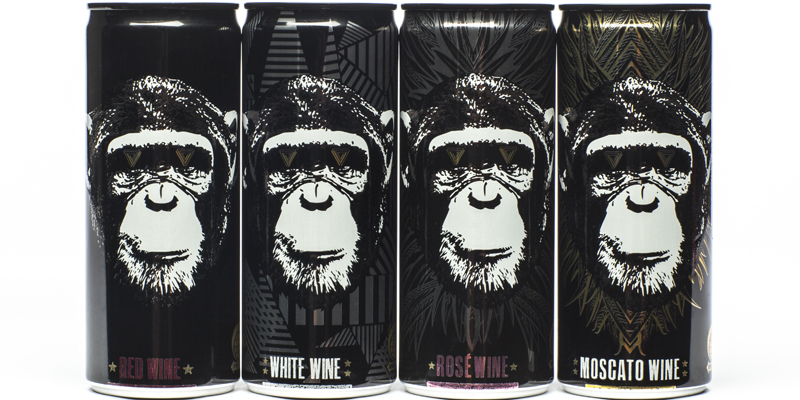Ben Parsons of Infinite Monkey Theorem (IMT) and Ryan Harms of Union Wine are making waves by canning wine in two places that make perfect sense: the heartland of craft beer, Denver and Oregon. But in order for them to take advantage of the latest round of press surrounding “wine in a can,” they must make their consumer comfortable with the product itself, not just the packaging — and time is running out. The problem is that both producers make better wine than that which they’re choosing to put into their cans, and they know it.
When you examine IMT, you’ll see that they currently produce four cans — Chardonnay, Merlot, Moscato and rosé — but one wine doesn’t go into those cans: their highly regarded 100th Monkey. As for Union, while Ryan does put the same Pinot Noir and Pinot Gris in both cans and bottles, he also runs two other labels, Kings Ridge and Alchemist, both at higher price points and quality. So what gives?
People that live in the two markets in which Ben and Ryan make wine spend their time outside, and they build their lives around it. Getting these people to adopt wine in a can should be easy, as they want something portable that can join them on their outdoor adventures. The idea is simple: make great wine approachable and affordable, and use the can to do that. It’s such a no brainer that IMT plans to “put at least 42,000 liters of wine in cans.” Not to be overlooked, Union produced 62,100 liters of canned wine this year.

But canned wine isn’t for everyone. When I asked a crowd of traditional wine enthusiasts – whom Ben and Ryan are trying to move away from – if they’d drink wine from a can, the definitive answer I received was, resoundingly I may add, “absolutely not.” But they aren’t the target demographic; it’s the people of the Twitter generation whose attention matters. They, unlike those before them, don’t carry the preconceived notion that wine must be served in a glass — they don’t care about such formalities. What they said time and again was “prove it to me.” This is where canning has an opportunity to win the hearts (and wallets) of this generation, but quality needs to improve, and with great quality wine in a can, comes trust.
Don't Miss A Drop
Get the latest in beer, wine, and cocktail culture sent straight to your inbox.This generation of consumers will bite once to give wine in a can a shot, but when they understand that what’s inside is not the “good stuff,” not even the same stuff they can get at the winery, they probably won’t bite again. This, the Twitter and Yelp generation, reveres quality and value.
That being said, we know there is a time and place for everything. This is still the generation that has made PBR — the low-cost beer poster child — so popular that the brand was sold for a reported $500 million profit in just five years.
That sentiment can be echoed in talking to potential consumer Teri Wilson, amongst others. She acknowledged that wine in a can at $14 for a four-pack — which is equivalent to a liter bottle — isn’t something she’s interested in at the current quality level. If she wanted to get wine to go outside, “she’d get the cheap stuff.” Echoing that point, Randy Freeland, the wine buyer for a major liquor store in the Denver area noted, “I can’t sell it. It doesn’t fit our market, but I sell the heck out of Zipz.” Randy goes on to note that Zipz can be an impulse buy, and often is. Zipz is also incredibly cheap.
But canning can work, and does work, just ask the craft brewers. Craftcans.com notes “there are over 475 American craft brewers canning over 1,800 beers.” Ben from IMT even talked about Oskar Blues in our conversation, noting that it worked for them, for the entire industry, and wondered why not for wine. However, canning has taken off in craft beer because the brewery is putting the best stuff they produce into those cans. Consumers ask for the best and breweries are giving it to them in the way they want.
While putting cheap stuff in a portable package may work for the short term, for the long term — just as the brewers found out — you have to put your good stuff in a can. The cheap stuff may work as a value play, but in order for consumers, who are eager to drink wine that fits with their lifestyle, to embrace cans that sell for $14 a four-pack, the wine has to be awesome. Otherwise they’ll just buy PBR.
Drew Knott can be found in the Denver area with a cup of coffee, a glass of wine or a beer when he’s not outside, or sometimes when he is.
